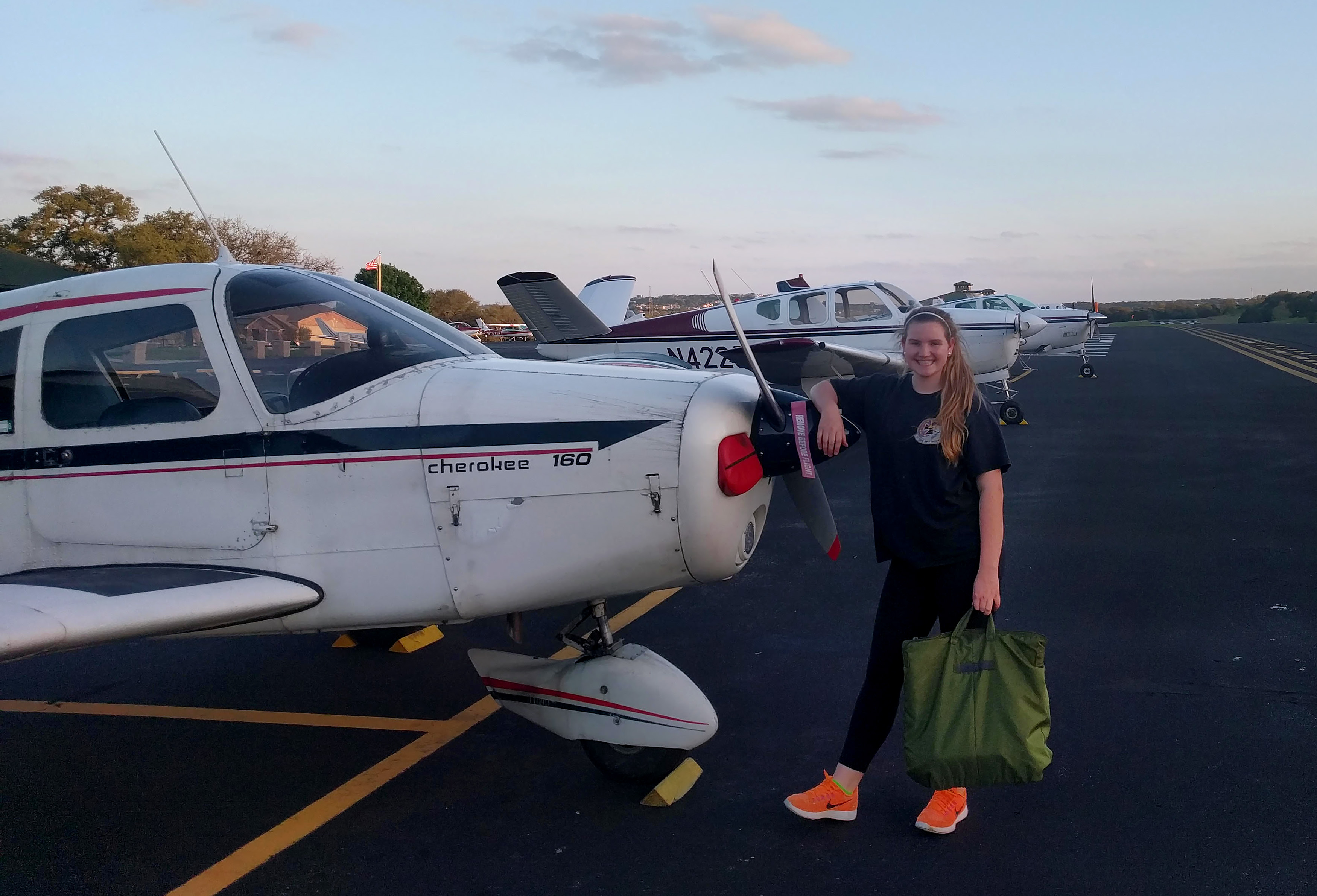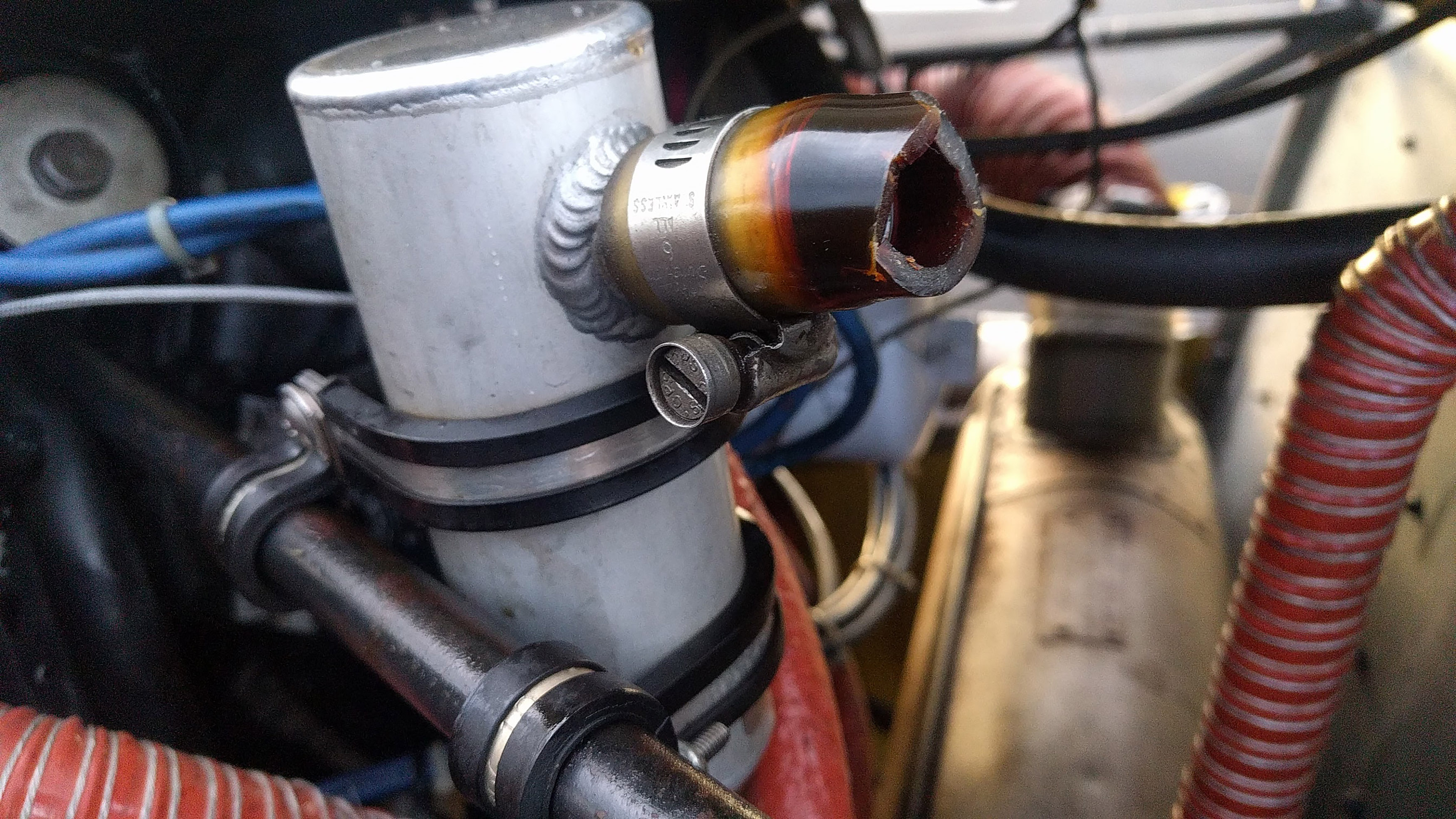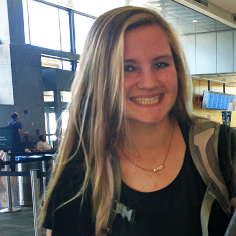Solo student calmly handles precautionary landing
‘Something’s not right’
Student pilot Lauryn Spinetta, a 2017 AOPA High School Flight Training Scholarship winner, was absorbed in takeoffs and landings at her favorite airfield when suddenly, her emergency training took a realistic turn.
"I was flying solo at Horseshoe Bay," near Austin, Texas, she told AOPA by telephone. "It was probably about my third touch and go. I landed, advanced the throttle and took off again and was about to turn to crosswind when I noticed a funky smell. It wasn’t a pleasant odor, so I thought 'Something's not right. I’ve never smelled this before,'" she recalled.
“I knew instantly that I needed to land, then I thought, ‘All right there’s an airport right there and I know I can land the airplane.’” She flew a normal pattern and “just kept it closer in case I needed to land right away.” She flew a little higher for an extra margin of safety and to verify that she could make the field should the 1962 Piper Cherokee PA-28 160 turn into a glider.
She scanned the engine gauges and “everything looked good” so she turned her attention to flying the airplane “although I knew you didn’t smell something like that unless something was really wrong.” By this time, the burnt smell didn’t totally go away, “though it had diminished some on downwind. I did my normal landing with a full stop instead of a touch and go.”

Her dad had been supervising from the ground and after she landed, the high school junior said her father asked, “What’s wrong, why did you stop?” The two inspected the engine compartment together and “nothing looked wrong” or out of place. She told him she checked the oil pressure in flight and didn’t note any low pressure reading. Nothing else was amiss, “so we thought, ‘That was really weird.’”
The two flew at a higher than normal altitude and at a slightly faster airspeed to their home field of Lakeway Airpark Airport 20 nautical miles away “and the whole time we looked for anything wrong.” When they landed, they peeled back the cowling to view the engine again. “Nothing looked wrong or weird. As I said, the oil pressure was a little low—at low rpm—but that had happened before” so it wasn’t a cause for alarm.
“We said, ‘Let’s look at it one more time,’ and thank God we did. My dad moved one of the oil lines around and it wasn’t attached to anything! It had pretty much cracked all the way through.”
They determined that the oil-air separator on the Cherokee’s Lycoming four-cylinder engine had cracked and was dangling like a broken tree limb. It allowed “about two quarts of oil” to escape and drop onto the engine to burn off during the touch and goes and later flight, accounting for the unusual odor.
Many pilots are familiar with the fine film of oil that clings to their aircraft’s belly—the result of combustion gases blown out an oil breather tube. Carlo Cilliers, an A&P who is AOPA’s technical specialist and in-house IA, explained that an air/oil separator allows engine oil blow-by gases to coagulate before returning to the crankcase. “Inside, it’s like a hurricane filled with a heavy oil mist.” Cilliers said an air/oil separator allows most of that oily mist to be recycled into the engine’s crankcase.

“It’s kind of an older airplane and the hose cracked because it was probably old, or maybe someone else did a hard landing, but at that moment it cracked a little bit more," Spinetta said. "I knew what to do, and I was grateful that we practiced emergency landings.”
Spinetta’s dad was an F-15 pilot before he switched to drones, and Spinetta explained that she has grown up with aviation. “I just really, really like to fly.” AOPA's You Can Fly High School Aviation Initiative scholarship funds are allowing her to pursue her dream.
“I’m super-grateful for the scholarship,” Spinetta said as she prepared to take the private pilot written exam July 14. “It really jump-started my flight training because I had no flight experience” before receiving one of the 21 scholarships awarded to young people in December, and funded by the AOPA Foundation.
Since then she has immersed herself further into aviation. Spinetta attended the U.S. Air Force Summer Seminar in June where attendees spent a week experiencing the academy “almost from the point of view as a cadet. You get to stay in the dorms, tour the facility, and train all day as if you were in basic training—which was very hard,” she recalled. “I signed up for the glider design workshop which was in the aeronautical lab and they gave us a tour. I thought it was super-cool. It definitely made me think about applying to the U.S. Air Force Academy. I realized I wanted to go to a college where there’s an airport nearby and fly whenever I want to. I just love flying.”

Because she is captivated by engineering and math, Spinetta is looking into aeronautical engineering as a college major. “That would be really cool,” she added. “I’ve always been interested in science, technology, engineering, and math, so the written [private pilot exam] is super interesting when you are learning about lift and why an airplane flies.” She said that the aerospace field “is definitely something I can consider pursuing in college and I can even see myself doing it the rest of my life.”
AOPA has recognized the importance of growing the pilot population, and the association put several programs in place to ensure a robust future for aviators. The goal of AOPA’s You Can Fly High School Initiative is to help build and sustain aviation-based STEM programs and provide a quality workforce to the aviation industry.
Spinetta passed her written exam nearly as easily as she handled the emergency, although a few questions were tricky, she said. Her immediate plans include earning her pilot certificate “before school begins again in the fall. That’s the big goal.”




